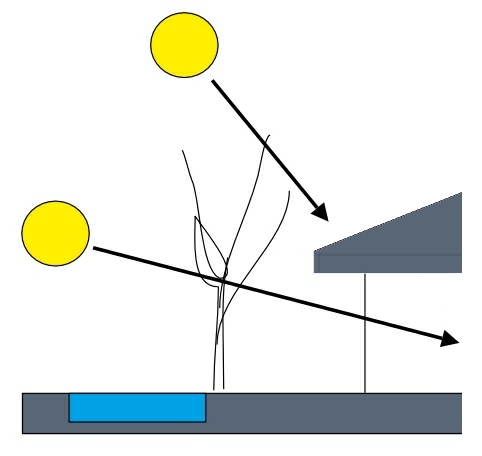Eaves
Contents |
[edit] Introduction
Eaves are the part of a roof that projects out horizontally beyond the side of the structure it covers. They can have practical functions, such as to provide shade and protection from rain, as well as aesthetic functions, creating a definite distinction between walls and roof.
Typically, the eave’s width is related to the roof pitch. The steeper the pitch is, the narrower the eaves.
[edit] Types of eaves
There are four basic types of eaves:
- Exposed: The finished underside of the roof and supporting rafters are visible from underneath.
- Soffited: Includes a soffit – the panelling which forms the underside of the eaves, connecting the bottom tip of the eave with the side of the building at a 90-degree angle.
- Boxed-in: Encases the roof rafters but meets the side of the building at the same angle as the roof pitch.
- Abbreviated: Cut off almost perpendicular with the side of the building.
Most types of eaves include a fascia, which is a horizontal board that runs around the edge of the eaves to cover the ends of the extended rafters.
Exposed, soffited and boxed-in eaves generally include air vents to ventilate the roof space or roof structure, preventing the accumulation of moisture and so reducing the likelihood of condensation forming. Eaves can also incorporate guttering, which conveys rainwater run off from the roof to a drainage system.
[edit] Purposes of eaves
Eaves prevent rain, snow and other debris from causing leakage-related damage to the building facade, by directing it out and away from the building.
Eaves can also provide shading to windows, helping to maintain comfortable internal conditions. In the winter, low-level sun is able to penetrate windows to warm and light the interior, whereas in summer, the projecting eaves prevent direct sunlight from entering the building.
They can also be used to help define the architectural style of a building. For example, Dutch Colonial houses featured flared eaves that curved up and away from the roof; the architect Frank Lloyd Wright often used sweeping, elongated eaves in his Prairie house designs; and traditional Asian pagodas are defined by tiers of multiple eaves. A-frame houses include eaves that can reach ground level. A characteristic element of the Italianate style is buildings with decorative, overhanging eaves on a slightly pitched roof.
[edit] Related articles on Designing Buildings Wiki
Featured articles and news
Latest Build UK Building Safety Regime explainer published
Key elements in one short, now updated document.
UKGBC launch the UK Climate Resilience Roadmap
First guidance of its kind on direct climate impacts for the built environment and how it can adapt.
CLC Health, Safety and Wellbeing Strategy 2025
Launched by the Minister for Industry to look at fatalities on site, improving mental health and other issues.
One of the most impressive Victorian architects. Book review.
Common Assessment Standard now with building safety
New CAS update now includes mandatory building safety questions.
RTPI leader to become new CIOB Chief Executive Officer
Dr Victoria Hills MRTPI, FICE to take over after Caroline Gumble’s departure.
Social and affordable housing, a long term plan for delivery
The “Delivering a Decade of Renewal for Social and Affordable Housing” strategy sets out future path.
A change to adoptive architecture
Effects of global weather warming on architectural detailing, material choice and human interaction.
The proposed publicly owned and backed subsidiary of Homes England, to facilitate new homes.
How big is the problem and what can we do to mitigate the effects?
Overheating guidance and tools for building designers
A number of cool guides to help with the heat.
The UK's Modern Industrial Strategy: A 10 year plan
Previous consultation criticism, current key elements and general support with some persisting reservations.
Building Safety Regulator reforms
New roles, new staff and a new fast track service pave the way for a single construction regulator.
Architectural Technologist CPDs and Communications
CIAT CPD… and how you can do it!
Cooling centres and cool spaces
Managing extreme heat in cities by directing the public to places for heat stress relief and water sources.
Winter gardens: A brief history and warm variations
Extending the season with glass in different forms and terms.
Restoring Great Yarmouth's Winter Gardens
Transforming one of the least sustainable constructions imaginable.























